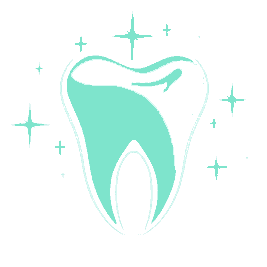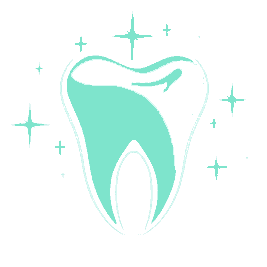Welcome to our discussion on a topic that sparks the interest of many: are teeth whitening kits safe? As you explore options to brighten your smile, it’s crucial to know what these kits involve and their implications for your dental health. Let’s dive into the essentials of teeth whitening kits, touching on their safety, effectiveness, and possible side effects.
What Are Teeth Whitening Kits?
Teeth whitening kits are popular tools that promise to lighten your teeth and enhance your smile from the comfort of your home. These kits typically include a bleaching agent like hydrogen peroxide or carbamide peroxide, which acts on the stains on your teeth’s surface and deep within, breaking them down to whiten your teeth.
There are several types of teeth whitening kits available:
- Gel-Based Kits: These come with a gel that you apply to your teeth using a tray that fits over your teeth. You wear the tray for a specific time as instructed.
- Whitening Strips: Thin, flexible strips coated with whitening gel that you place directly on your teeth.
- LED Whitening Kits: These kits include a light-emitting diode (LED) light that helps to speed up the bleaching process when used with a gel.
Understanding how these different teeth whitening work will help you choose the right one for your needs and ensure you use it correctly for the best results.
Safety of Teeth Whitening Kits
When it comes to enhancing your smile with teeth whitening kits, safety is a key concern. Generally, when used according to the manufacturer’s instructions, these kits are considered safe for most people. However, it’s important to follow a few guidelines to ensure that your experience is both effective and safe:
FDA Regulations
In the United States, the Food and Drug Administration (FDA) regulates teeth whitening products as cosmetics. This means they must be safe for consumer use when used according to labeled directions or as commonly intended.
Proper Usage
Always use the product only as directed. This includes not overusing the product or leaving it on your teeth longer than recommended, as this can lead to tooth sensitivity or gum irritation.
Consultation with a Dentist
It’s advisable to consult with your dentist in Buffalo before you begin any whitening treatment, especially if you have dental concerns such as cavities, gum disease, or crowns. A dentist can help assess whether teeth whitening is appropriate for you and recommend the most suitable type of treatment.
By adhering to these guidelines, you can help ensure that your use of teeth whitening kits is both safe and beneficial.
Potential Side Effects
While teeth whitening kits are safe for many users, they can cause side effects, particularly if not used as directed. Here are some common side effects to be aware of:
Tooth Sensitivity
This is one of the most common side effects of teeth whitening. The bleaching agent can temporarily increase the sensitivity of your teeth to temperature, pressure, and touch. This usually diminishes a few days after the end of the treatment.
Gum Irritation
Also known as gingival irritation, this can occur if the whitening gel comes into contact with your gums. To minimize this risk, ensure that you apply the gel carefully and remove any excess that spills over onto your gums.
Enamel Damage
Overuse of whitening kits can potentially wear down your enamel, especially if the kits are used too frequently or left on the teeth too long.
RECOMMENDATION
Follow all product instructions and start with shorter treatment periods to assess your tolerance. Using products with a lower concentration of peroxide can be gentler on your teeth and gums.
Effectiveness of Teeth Whitening Kits
Teeth whitening kits are widely used because of their ability to deliver noticeable results. However, the effectiveness of these kits can vary based on several factors:
Type of Staining
Kits tend to be more effective against yellow stains, which are typically easier to bleach. Stains from medications or gray tones may not respond as well and might require professional dental treatments.
Concentration of Bleaching Agent
Kits with a higher concentration of peroxide usually offer more dramatic results quicker, but they may also increase the risk of sensitivity and other side effects.
Consistency of Use
Following the product instructions and completing the full treatment course as recommended can significantly impact the effectiveness of the whitening process.
… over-the-counter kits are effective for many users, they are generally less potent than professional treatments…
While over-the-counter kits are effective for many users, they are generally less potent than professional treatments offered by dentists in Buffalo. Therefore, setting realistic expectations about the results is important.
Common Issues and Troubleshooting
Even when used correctly, users might encounter some issues with teeth whitening kits. Here are common problems and tips for troubleshooting them:
Uneven Whitening
This can occur if the whitening agent is not applied evenly or if the tray or strips do not fit well. Ensuring proper application and considering a custom-fit tray can help avoid this issue.
Not Reaching Desired Whiteness
Sometimes, the whitening effect may be less dramatic than expected. In such cases, an additional round of treatment may be needed, but it’s crucial to wait the recommended time between treatments to avoid overuse.
Sensitivity After Whitening
If sensitivity occurs, reducing the frequency of use or opting for a product with a lower peroxide concentration may help. Additionally, using toothpaste designed for sensitive teeth can provide relief.
By addressing these common issues effectively, you can enhance your teeth whitening experience and achieve better results.
Frequently Asked Questions
To wrap up, let’s address some frequently asked questions that might clarify any remaining uncertainties about teeth whitening kits:
Are teeth whitening kits suitable for everyone?
Most adults can safely use teeth whitening kits, but they are not recommended for children under 16, pregnant women, or people with severe dental problems without consulting a dentist in Buffalo.
How often can you safely use teeth whitening kits?
It’s generally safe to use these kits as per the manufacturer’s instructions. Typically, a full treatment can be repeated every 6 to 12 months, depending on the product and your dental health.
Can teeth whitening kits damage your teeth or gums?
When used as directed, teeth whitening kits are unlikely to cause long-term damage. However, misuse or overuse can lead to problems such as enamel damage or gum irritation.
Conclusion
In conclusion, teeth whitening kits offer a convenient and effective way to brighten your smile when used properly. While there are potential side effects, following the recommended guidelines and consulting with a dental professional can help ensure safe and satisfying results. Always choose products that are well-regulated and come with clear usage instructions to maintain your dental health while achieving a whiter smile.

